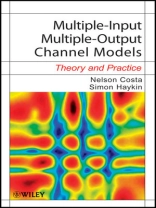A complete discussion of MIMO communications, from theory to
real-world applications
The emerging wireless technology Wideband Multiple-Input,
Multiple-Output (MIMO) holds the promise of greater bandwidth
efficiency and wireless link reliability. This technology is just
now being implemented into hardware and working its way into
wireless standards such as the ubiquitous 802.11g, as well as
third- and fourth-generation cellular standards.
Multiple-Input Multiple-Output Channel Models uniquely brings
together the theoretical and practical aspects of MIMO
communications, revealing how these systems use their multipath
diversity to increase channel capacity. It gives the reader a clear
understanding of the underlying propagation mechanisms in the
wideband MIMO channel, which is fundamental to the development of
communication algorithms, signaling strategies, and transceiver
design for MIMO systems.
MIMO channel models are important tools in understanding the
potential gains of a MIMO system. This book discusses two types of
wideband MIMO models in detail: correlative channel
models–specifically the Kronecker, Weichselberger, and
structured models–and cluster models, including
Saleh-Valenzuela, European Cooperation in the field of Scientific
and Technical Research (COST) 273, and Random Cluster models. From
simple to complex, the reader will understand the models’
mechanisms and the reasons behind the parameters. Next, channel
sounding is explained in detail, presenting the theory behind a few
channel sounding techniques used to sound narrowband and wideband
channels. The technique of digital matched filtering is then
examined and, using real-life data, is shown to provide very
accurate estimates of channel gains. The book concludes with a
performance analysis of the structured and Kronecker models.
Multiple-Input Multiple-Output Channel Models is the first book
to apply tensor calculus to the problem of wideband MIMO channel
modeling. Each chapter features a list of important references,
including core literary references, Matlab implementations of key
models, and the location of databases that can be used to help in
the development of new models or communication algorithms.
Engineers who are working in the development of telecommunications
systems will find this resource invaluable, as will researchers and
students at the graduate or post-graduate level.
เกี่ยวกับผู้แต่ง
Nelson Costa, Ph D, is President and CEO of Deus Ex Machina
Consulting Inc.
Simon Haykin is Distinguished University Professor at Mc Master
University, Ontario, Canada.












